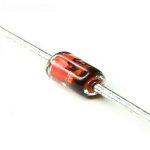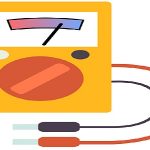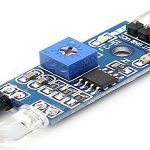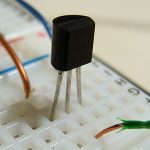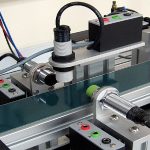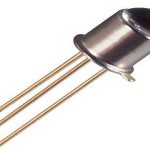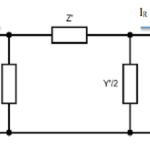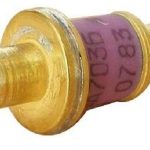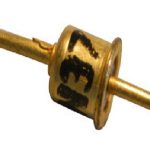The concept of IMPATT diode was actually invented in the year 1954 by William Shockley. So, he expanded the idea for producing a negative resistance with the help of a mechanism like transit time delay. He proposed the injection technique for charge carriers within a PN junction is forward biased and published his thought in the Technical Journal of Bell Systems in 1954 and titled with the name 'Negative Resistance Occurring from Transit Time within Semiconductor Diodes. Further, the proposal … [Read more...]
What is PIN Diode : Construction, Working & Its Applications
We know that there are different types of diodes are used in different applications based on the requirement like Varactor diode, Schottky diode, LED, Zener diode, etc. Even though, the most popular diode including a basic PN- junction is also used in different circuits which are called a PIN diode. As compared with a normal PN junction diode, this kind of diode is different because this diode includes three layers like P, I & N whereas the PN junction diode includes two layers like P & … [Read more...]
What is Multimeter : Types, Working & Its Applications
A measuring device like a multimeter is an essential device in the field of electronics and electrical labs or workshops to measure the electrical properties of industrial wiring as well as tools. Before knowing about this device, some fundamental concepts we have to know like the voltage, current, and resistance. Here, voltage is the disparity in charge between the two points, the current is nothing but the flow of charge carriers and resistance is the measure of the current flow. At … [Read more...]
What is IR Sensor : Circuit & Its Working
IR technology is used in a wide range of wireless applications which includes remote controls and sensing. The infrared part in the electromagnetic spectrum can be separated into three main regions: near IR, mid-IR & far IR. The wavelengths of these three regions vary based on the application. For the near IR region, the wavelength ranges from 700 nm- 1400 nm, the wavelength of the mid-IR region ranges from 1400 nm - 3000 nm & finally for the far IR region, the wavelength ranges from … [Read more...]
What is a Temperature Sensor : Types & Its Applications
In our day-to-day life, we all utilize different types of sensors. From that, the temperature sensor is one kind of sensor that is used most frequently in different forms like microwaves, water heaters, refrigerators, thermometers, etc. Generally, these types of sensors are used in a wide range of applications to measure the amount of coolness or hotness of the device and change it into a readable unit. Do you know how the temperature of the buildings, dams, boreholes, soil are measured:? … [Read more...]
What is a Proximity Sensor : Types & Its Applications
Proximity sensor comprises all sensors that execute non-contact detection as compared to limit switches that notice objects through contacting physically them. These types of sensors change the data into an electrical signal on the movement or occurrence of a target. These sensors are used in mobile phones. Once the target is in a small range, then the lock screen of the mobile user interface will come into view which is called sleep mode. These sensors can be utilized to identify air gestures … [Read more...]
What is a Phototransistor : Working & Its Applications
After the development of the first point-contact transistor, the phototransistor was invented by one of the teams at Bell Labs. At that time, a large number of developments were being started. Even though the phototransistor history is not publicized like other early developments of semiconductors, but it was certainly a very significant development. The first invention of this transistor was announced on March 30th, 1950. This article discusses an overview of a phototransistor and its … [Read more...]
What is Admittance : Formula & Its Derivation
In the scope of electrical engineering, we are familiar with resistance in digital circuits. Along with this, impedance also shows the impact in AC circuits where consists of the consequences of both capacitance and inductance. The impedance generated by these consequences is combinedly stated as reactance and this creates the imaginary part of the complex impedance while resistance creates the real part. The reciprocal term of impedance is admittance. The inventor of the term admittance is … [Read more...]
What is Gunn Diode : Construction & Its Working
In GaAs semiconductor materials, the electrons are present in two states like high mass low velocity & low mass high velocity. By the demand of an adequate electric field, the electrons are forced to move from a low mass state to a high mass state. At this specific state, electrons can form a group & moves at a consistent rate that can cause to flow current in a series of pulses. So this is known as Gunn Effect which is used by Gunn diodes. These diodes are the best and most frequently … [Read more...]
What is Tunnel Diode : Working & Its Applications
A tunnel diode was discovered by Leo Esaki in the year 1958. He noticed that if a semiconductor diode is doped heavily through impurities, then it will generate negative resistance that means the flow of current across the diode will decreases once the voltage enhances. Leo Esaki got the Nobel Prize in the physics subject for inventing the effect of electron tunneling that is used in these types of diodes in the year 1973. These diodes are one of the most important solid-state electronic … [Read more...]
- « Previous Page
- 1
- …
- 9
- 10
- 11
- 12
- 13
- …
- 23
- Next Page »

